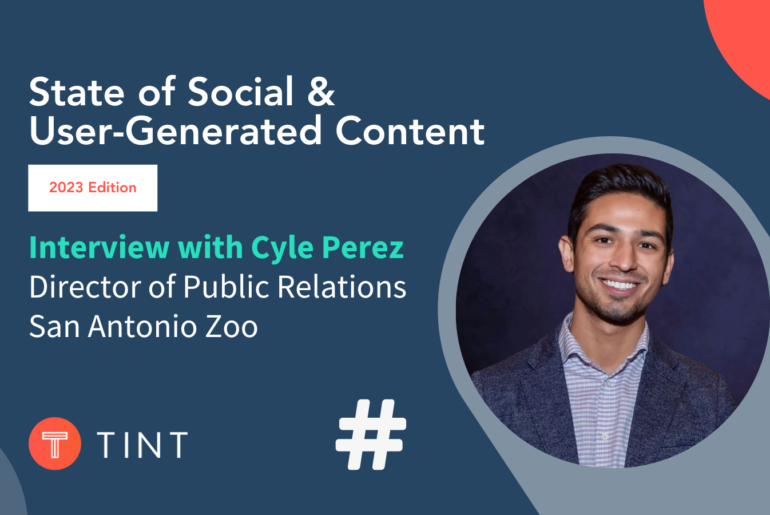If happiness psychology can be applied for your own well-being, what forbids you from applying similar psychology methods to your social media marketing campaigns? Since social media is a people’s platform, you can still apply psychology to foster better engagement experience with your own followers, and those yet to become your followers.
Crunching numbers all day might make you neglect the idea that social media users are real people, and it’s surprisingly effective to learn about basic human behavior and how it responds to psychological signals.
If you want to ramp up your social media engagement within your circles of followers, put in action the following psychology hacks to win them over with a refined way of thinking.
Using social media proof for consumer reassurance

Telling someone that you have 1 million Twitter followers without providing the necessary proof of that fact is going to raise questions, it will evoke doubt, and you’ll end up being laughed at. And that’s bad for your image. But what if you do have those followers, and you just haven’t bothered to inform the world?
Buffer concluded a study on social proof psychology, and found that factors like displaying customer feedback, showcasing your social followers on your website, and building insider relationships with influential thinkers can boost your own social engagement by a significant margin.
Adding a social profile widget to your blog or website is as easy as using a platform such as AddThis, and there’s a lot more options to choose from in the open-source community.
![]()
Mashable blog uses a the direct social proof widgets that Facebook, Twitter and Google+ provides for their users. Putting this widget above the content area ensures that even new readers are acquainted with the blog’s popularity.
Emotional triggers

Happiness is one of those emotions that naturally spreads without judgement being passed, take for example the basic concept of congratulating someone for finding a new job, and feeling sorry for someone losing their job.
Of course, both are natural phenomena bound to happen at least once in your life, but this kind of understanding about the mind’s functionality can help you prepare better social content that your audience would naturally find positive, and engaging.
Jonah Berger has done a lot of work in the field of social media psychology, and has combined the findings of science and neuroscience to understand how different emotions impact user’s decision to pass social content forward to their peers. And quoting Jonah himself, “The more positive an article, the more likely it was to be shared.”
Using goal oriented content to promote engagement
Now that you know the science behind emotional triggers on social media, it’s time to bring your content strategy up to speed, reevaluate it, and make the necessary changes so that your readers are inspired, and feel free to share your inspiration with others.
A good example would be sharing a sudden loss in revenue, often these types of posts are seen as negative by the masses because they portray failure, and some people will get angry because they’re losing money as investors into your company.
Why not flip the switch and talk about the lessons you learned during this time, and inform your audience about the changes you plan to make to improve the situation?
Far too often companies keep silent about their losses, but platforms like Buffer have proven that transparency in business pays off, and pays off really well.
Using questions to deepen relationships

Social media isn’t just for sharing content, it’s also for engaging users individually, to understand them better, their perspectives, and in many cases the way in which you can help them. You shouldn’t avoid talking to others on social media.
As a business owner, engaging someone in a conversation is your chance to listen to their needs, an opportunity to network and seed new relationships, and spread the word about your brand and how it can help.
We get wise by asking questions, and even if these are not answered, we get wise, for a well-packed question carries its answer on its back as a snail carries its shell. — James Stephens
The wisdom in this case is your ability to understand the people who actively engage with your social pages, and your brand as a whole.
But how do you ask the right questions?
- Offer help beforehand — if for example you’re sharing something on your Facebook page you can add an additional line at the end of the post that suggests that you’re open to questions, and want to help people better understand your idea.
- Create question surveys — both Twitter and Facebook can be used for directly asking your audience questions. Figure out what are some pain points in your industry, and ask your followers how they’re managing it, if they’re struggling — this is your chance to upsell your product.
- Monitor your activity feed — whether it’s a new or an old post, chances are someone is saying something about your content/brand, and those are all opportunities for you to learn more about each person individually. If they’re angry, listen to their feedback and offer them a solution, but if they’re happy — give them an incentive to invite their friends to your network. Works both ways!
- Don’t get locked out — your customers are everywhere, particularly communities and fan pages that are related to your industry. Becoming a follower of them is free, and you’ll have a lot of opportunities to see what people are talking about, this includes seeing the kind of problems people want to have solved. To become a thought leader, you need to engage your audience, versus just sharing blog posts about it.
You can count on the fact that being actively engaging is going to result in people being more interested in hearing what you have to say.
Become part of an influencer network

Every single day, thousands of journalists and editors from all across the world are getting their inboxes flooded with offers and opportunities for promoting a third-party service. Some have gotten so many that they have developed an ability to intuitively tell whether an offer is going to be rewarding for both sides, or it’s just another attempt for someone to try and get free publicity. Welcome to influencer marketing!
There aren’t many more powerful sales driven marketing approaches than word of mouth recommendations, this comprehensive study from McKinsey goes in-depth about the reasoning behind consumers listening to word of mouth feedback, and using it as a factor of credibility, and trust.
Getting your brand name tweeted out by a leading expert in the field can expose you to a new audience, but also instill trust in new customers for your service as a reliable solution for their problems.
A review for your product from an individual is more authentic in nature, as it adds a level of sincerity and emotional relatability connection. Katie Carlson sees it as another aspect of social proofing for your social identity.
Building relationships with experienced thinkers doesn’t have to be hard[/inlinetweet], follow some simple guidelines and you’ll find yourself with plenty of opportunities to work with:
- Establish a goal — brainstorm about the potential outcomes you wish to experience from your influential marketing campaigns. Whether it’s to increase your followers, or bring more sales, having a clear goal will make it easier to prepare a pitch.
- Research influencers — Brittany Berger from Mention hasn’t hesitated to put together all of web’s most sought after tools for concluding influencer research; use them to find influential people in your market. However, research also means understanding each influencer individually, knowing their strong and weak points, and understanding what their work means for them, otherwise you’re just cold pitching, and that doesn’t always end successfully.
- Prepare a pitch — Goal? Check. List of prominent experts? Check. Lastly, you need a pitch, an interesting and catchy way of doing business with this potential new business partner (at least on social media), but to stand out you’ve to be unique. You’re not the only one sending these people a pitch, how will yours stand out? That’s where you talk about your business values, and make it clear that you’re looking to establish a mutual relationship based on mutual business interests.

Anyone who has ever owned their own website or business platform, will tell you that one of the hardest things to deal with is people who are begging for recognition, without bothering to put in any effort into the process of nurturing a successful relationship.
Social media is a remarkable marketing channel for promoting your brand visibility. If engagement is what you lack, then by applying these social media psychology hacks, not only will you learn more about your customers and fans, you will organically grow your network as people become acquainted with your brand.
How do you tackle social engagement?
Alex Ivanovs has spent the last decade working with small business and web development projects related to information optimization. His current project is helping to optimize growth for Colorlib.




